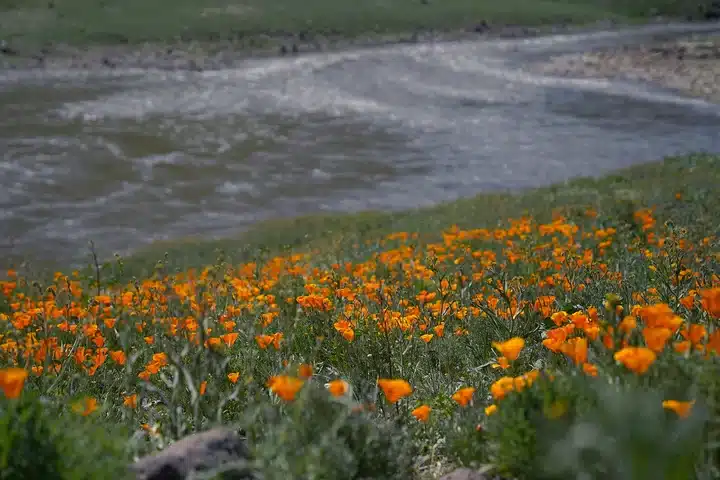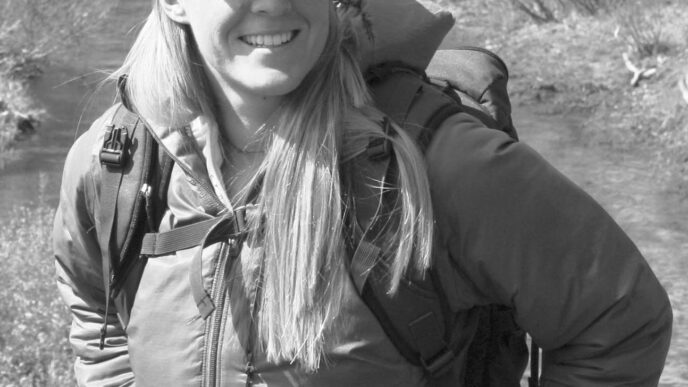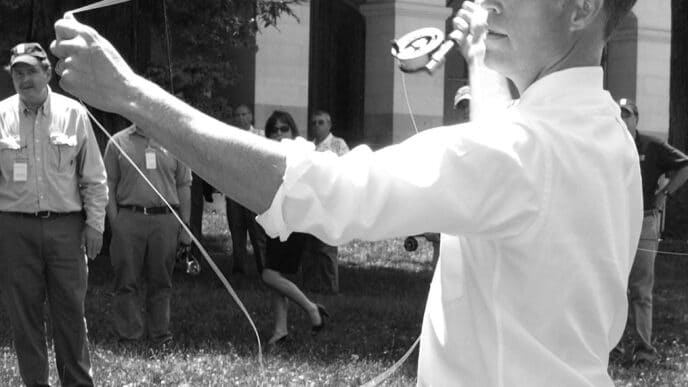Celebrating the Unprecedented Return of Salmon to the Klamath River Basin
It’s been just over one year since the removal of four hydroelectric dams on the lower Klamath River, the largest dam-removal project in U.S. history—and the results are already astonishing.
The California Department of Fish and Wildlife (CDFW) reports that wild salmon are now re-occupying “just about every corner of their historic habitat” in the Klamath Basin—a feat once deemed possible only over decades. Michael Harris, Environmental Program Manager of CDFW’s Klamath Watershed Program, shares, “There are salmon everywhere on the landscape right now, and it’s invigorating our work.”
California Trout (CalTrout), along with tribal partners, underscore just how rapidly the river and its fish have responded. “What we witnessed was extraordinary—the river came back to life almost instantly, and fish returned in greater numbers than anyone imagined,” said Damon Goodman, Shasta-Klamath Director for CalTrout. Barry McCovey Jr., Director of the Yurok Tribal Fisheries Department, added, “The Klamath is showing us the way. The speed and scale of the river’s recovery have exceeded our expectations and even the most optimistic scientific modeling, proving that when the barriers fall, nature has an incredible power to heal itself.”

WHAT’S HAPPENING ON THE RIVER
The progress is measurable and striking: scientists have documented more than 7,700 fall-run Chinook salmon migrating upriver of the former lowermost dam at Iron Gate last autumn to access habitat previously blocked for over a century.
Water temperatures are adjusting to more natural seasonal swings: cooler in fall when adult salmon arrive, warmer in spring when juveniles migrate toward the ocean—a shift that improves rearing and survival conditions for fish.
In addition, the prevalence of the parasite Ceratonova shasta has declined, harmful algal blooms have become smaller and less frequent, and overall water quality in the basin is improving—factors that further support salmon recovery.

WHY THIS MATTERS
This isn’t just a win for one river or one species—it is a landmark for restoration ecology, tribal sovereignty, and recreational fisheries alike. Removing the dams unlocked hundreds of miles of spawning and rearing habitat that had been shuttered for generations. The fact that the recovery is happening faster than anyone predicted elevates this from hopeful to historic.
For tribal communities such as the Yurok, who have long regarded the salmon as central to cultural, subsistence, and ecological life, the return of fish to ancestral waters is deeply meaningful. As McCovey observed, the river “just feels different. It feels stronger. It feels cleaner.”
WHAT COMES NEXT
While the progress is remarkable, this is still the opening chapter of a long-term restoration story. Work continues on habitat restoration, riparian plantings, sediment management, monitoring fish runs, and ensuring that spring-run Chinook and other legacy populations also rebound.
Moreover, investments are already flowing: CDFW has committed over $30 million toward Klamath Basin habitat-restoration projects—ranging from fish-passage improvements to buffer-fence installations in former reservoir footprints.
A BRIGHTER FUTURE
One year after the dams came down, the Klamath River is showing us how restoration can happen at scale and at speed. The salmon are returning home, long-closed reaches are waking up, and nature is proving that when we remove the obstacles, recovery can unfold far faster than the models predicted.
This is a moment to applaud the many partners—tribes, state and federal agencies, nonprofits, funders, scientists, anglers—who made it possible. The river’s revival is already a success story. And for the fish, the people, and the watershed—this is just the beginning.
Stay tuned for an update on 2025 salmon returns in next month’s issue of The Drift.
















